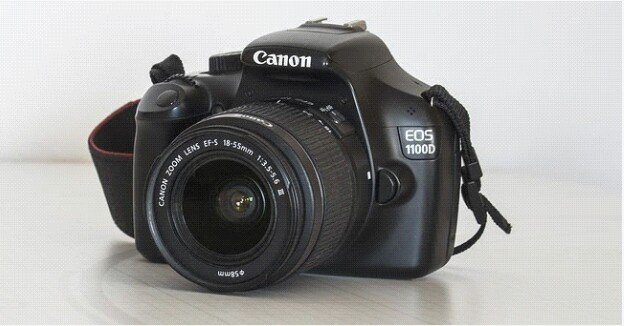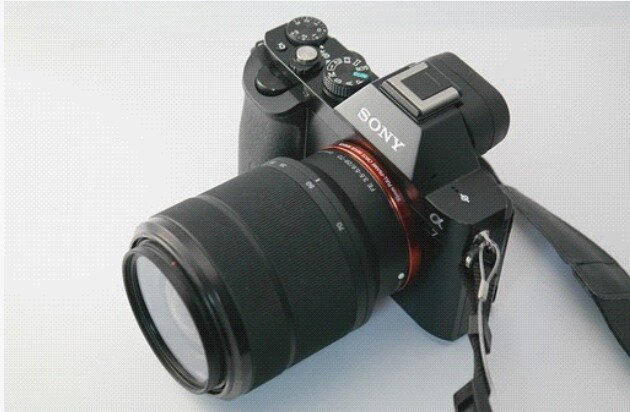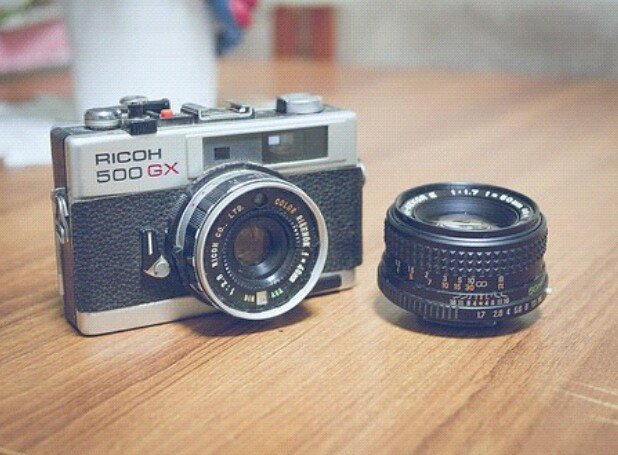Digital Cameras...photography has Never been this Easy
Children of this generation would never understand the struggle we faced growing up.
Growing up, do you remember how taking photographs was such a big deal, we literally had to wait for special occasions like festive seasons or birthdays to snap photographs.
Even on those special occasions due to the use of analog cameras there was practically no room for taking numerous photos and the most annoying part for me was I would not have an idea of how the photograph would look like, and i would have to wait for several days or even weeks for the film to be developed and for the prints of the photograph to get to me before i know the fate of the photograph.

Canon Digital Camera from pixabay under CCO license
With the advancement of technology Digital cameras came to the rescue and we would forever be grateful. Digital cameras came on board and the technology was welcome with open arms due to the ease users experience when they use it as well as its other numerous benefits.
At the stroke of a finger Digital technology completely eliminates all the problems associated with analog cameras and It did not come as a surprise that digital cameras became popular as soon as they hit the market.
Due to the convenience and flexibility using digital camera offers, photographers and users could easily experiment and become more creative with their photos.
For instance, From the LCD screen of your digital camera, you immediately know exactly how the photos you just took look like, if the photo wasn’t Cool enough you can simply delete and snap another one. This was not possible using film cameras.
The photos one gets from a digital camera are already in digital formats, since the photos are stored in long strings of numbers, computers can effortlessly process it since its (0 and 1). This gives us instant photos, allows users to be creative with the editing of the photos, sharing photos using smartphones becomes effortlessly easy, as well as using it for other purposes in an instant.
The simplification of saving and sharing of photos digital processes offer was one of the major shift from analog cameras which was dependent on mechanical and chemical processes. Now You can go ahead and snap hundreds of photos in few minutes, plug the camera to your laptop and immediately upload, share or print them as you please.
Both digital and Analog cameras make use of similar components, such as Lens and shutter. And have a few similarities. For instance, Light can’t travel through the lens if the shutter is closed but once the shutter is opened, light can now pass through the lens to strike some sort of light sensitive material inside the camera.
But at this point the similarities ends, the type of surface that measures the light as well as the method used by the camera to create the photograph is totally different. Although most of the associated components of the analog and digital cameras are similar but they function in a different way. In a digital camera image sensors are used as opposed to light falling on a photosensitive film in analog cameras.
In the case of Analog cameras, the camera is virtually useless without the film, and the image would have to be printed on a photographic paper, and for one to have a digital copy the photo would have to be digitally scanned.
Whoops isn’t that just stressful and exhausting?

Sony Digital Camera from pixabay under CCO license
To fully understand the operation of a digital camera, first I would like to show you the various unique components that is peculiar to the digital camera.
IMAGE SENSOR: In a digital camera the image sensor is the light detecting microchip. It is a semiconductor chip that contains millions of light sensitive pixels or arrays that individually measures the light striking each of them and turns the incoming light rays into electrical signals. Either Charge – coupled device (CCD) or Complementary Metal Oxide semiconductor (CMOS) technology is used: CMOS chips are cheaper but for expensive cameras with higher pixels CCD technology is used.
DIGITAL CONVERTER: this is the chip that converts the data collected in each pixel to a digital signal.
CIRCUIT BOARD: All the computer chips the camera requires to record data are held together by the circuit board. The circuitry of the circuit board is such that data from the image sensors and other chips are easily carried to the storage in the memory card.
DISPLAY SCREEN: After photos are shot with the digital camera, they can be composed and reviewed using the screen, also the settings of the camera can be changed using the screen. Although some digital cameras use viewfinder for composing the scene, in this case the screen can be the second composition option.
USB CONNECTOR: Once you attach a USB cable to the USB connector and connect to your computer to have access to the photos you have taken. The computer views the digital camera just like any other memory device (like a hard drive)
SD (Secure digital) CARD SLOT: the internal memory of cameras is quite small so the SD CARD Slot is important because this is the part of the camera where you can slot memory card so you can store more photos.
FLASH CAPACITOR: for the camera to fire the flash, the capacitor charges for several seconds to store energy.
BATTERIES: this powers the camera
LENS: this is the part of the camera that catches light from the object being photographed and focus it on the CCD. The lens used in a digital camera is determined by the cost as well as the focal length adjustment. This lens used in a digital cameras differs based on the cost.

RICOH 500 GX digital camera from pixabay under CCO license
Now with the basic understanding of the function of the major components of the digital camera, understanding the operation is easier.
Regardless of the type of digital camera been used from the cheapest and simplest digital camera to the advanced DSLR camera the process of recording the digital image and storing the data on a memory card is the same.
Once the shutter button of the digital camera is pressed, as the shutter opens light travels through the lens and strikes the image sensor. The light hits the image sensor as soon as the user hits the shutter button. As soon as the shutter opens the pixels are illuminated by the light in different intensities
For precise measurement to take place in the camera the intensity of the light at millions of different spots on the image sensor is measured by the individual pixels on the image sensor.
To provide sharp focus for the camera the various glass elements in the lens rotates and this can be done automatically or manually. Automatic focus is such that the camera itself adjusts the glass elements automatically and manual focus is such that the user twists a ring to manually adjust the glass elements.
Have you ever used a digital camera and you realized that the image was just blurred?
Well this was as a result of imprecisely focused light..
Now to avoid a blurry scene when using the digital camera, the light that travels from the scene through the lens must be properly focused on the Image sensor.
Furthermore, the measured lights is converted into electrons by Each pixel. And then an Analog –digital-converter (ADC) chip is responsible for converting the light signal at each pixel into a digital value which is basically an enormously long string of numbers describing the exact details of each pixel it contains.
Now that the light from the scene has successfully being converted to a digital value, the camera can now easily move the digital binary bits through the circuitry on the circuit board. As the bits arrive at the memory card, the digital camera makes use of a firmware to write the data to the card.
Now you can see clearly how convenient using a digital device can be, Since Digital cameras store the images as digital bits of data, photos are stored as digital bits, users can easily treat them like any other computer file, you can easily share the images on any device and with anyone instantly. Once the photo is ready Users can now be creative and make changes to the images using image editing software and add super cool effects to the photos Easily.
This image editing software simply work by adjusting the numbers that represent each pixel of the image. Now let’s assume you click on a control that makes the image 50% brighter, what happens behind the scene is the program goes through all numbers in each pixel in turn and increases them by 50%.
For cases where you want to flip an image horizontally, the program simply reverses the sequence of the numbers it stores so they run in the opposite direction. As you play around and manipulate photos with any image editing software and the images changes immediately, what you don’t see is the changing of numbers at the background.
Finally, the major determinant of the clarity of any photo taken by a digital camera is the Resolution of the camera which is always measured in pixels. Basically if the number of pixels are more, the resolution increases and therefore the picture quality is increased. That is why high quality digital images look very clear and often take relatively large space on one’s laptop or memory card. Just one photo can be several megabytes (millions of character) in size.
The various type of resolution available for digital cameras are majorly dependent on their prices. Although most digital cameras have flexible settings that allows the user to take pictures at higher or lower resolutions. If you select high resolution, you get better quality photos with large sizes, so overall the camera would be able to store fewer images on the memory card. But as for low resolution images the quality of the images wouldn’t be as good due to the fact that the images are compressed.
SUMMARY
Digital cameras came on board and really transformed photography for the better. Thanks to the super cool cutting edge image sensors. However, over the years it doesn’t come as a surprise that digital cameras have seen massive fall in sales as a result of the massive rise of sales of smartphone and tablets. Since users now have smartphones with superb cameras the need for standalone digital cameras dropped.
But then if you want to take professional quality photos, there is really no comparison between smart phones and DSLRs. The image sensor of a top notch DSLR is 50 times bigger in area than a smartphone not forgetting it has better lens which fundamentally makes the RAW image of a DSLR better.
If you can afford it, you can enjoy the best of both worlds by having both a DSLR and a smartphone.
REFERENCES
How Digital cameras work
The mechanism of a digital camera
I always wanted a digital camera but i never have one.. Its great reading this nice article.
Oh yea i want one too.... Thanks for stopping by man
Nice article man
Can we classify our phone cameras as digital cameras.?? 🤔🤔
No.... Phone cameras are quite different @osariemen
I'm always in love with good cameras, I most times go for smartphones with good quality camera..Thanks for the insight into cameras..such a beautiful piece.
An average person would go for a Smartphone with good camera.... Smartphones are pretty easier & handy..
I'm Glad you found the post insightful
smartphone picture quality is definitely nothing compared to what you'll get from a top notch DSLR but the gap is not as wide as it used to be.
Nice article
Yes i Agree .... Decades ago mehn... We wouldn't even be having this conversation!
Smartphones are running closely behind
Thanks for stopping by
Well written! I'd have loved some visual representation here though, even if just tacky MS Paint drawings!
Thanks for the observation... I would put that into my next post
Thanks for stopping by @mobbs
Hi @dannybravo94!
Your post was upvoted by utopian.io in cooperation with steemstem - supporting knowledge, innovation and technological advancement on the Steem Blockchain.
Contribute to Open Source with utopian.io
Learn how to contribute on our website and join the new open source economy.
Want to chat? Join the Utopian Community on Discord https://discord.gg/h52nFrV
Cameras have influenced the life and lifestyles of our generation. A lot of people literally live for the cameras.
Its nice to read about what shapes some lives